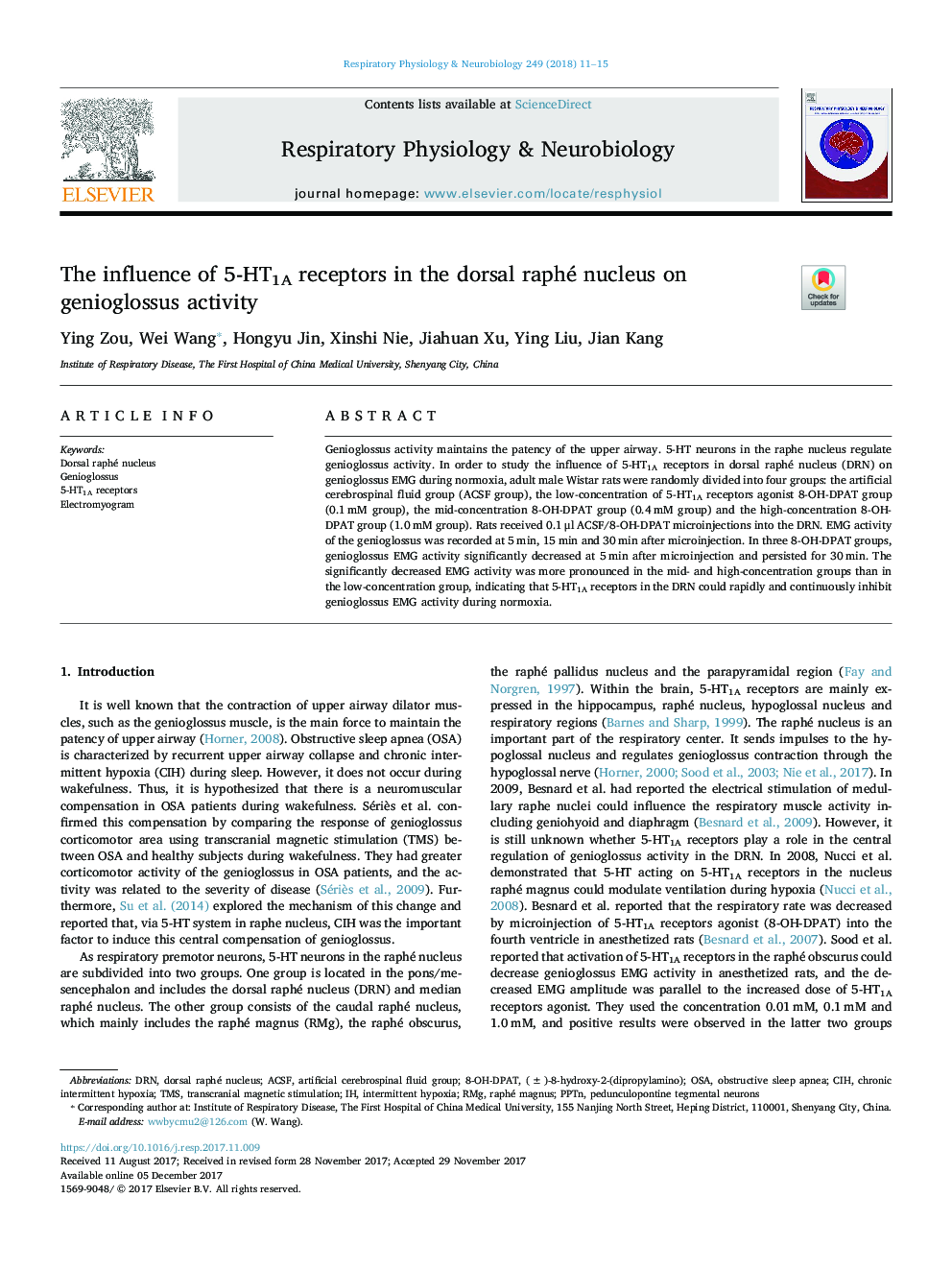| Article ID | Journal | Published Year | Pages | File Type |
|---|---|---|---|---|
| 8650826 | Respiratory Physiology & Neurobiology | 2018 | 5 Pages |
Abstract
Genioglossus activity maintains the patency of the upper airway. 5-HT neurons in the raphe nucleus regulate genioglossus activity. In order to study the influence of 5-HT1A receptors in dorsal raphé nucleus (DRN) on genioglossus EMG during normoxia, adult male Wistar rats were randomly divided into four groups: the artificial cerebrospinal fluid group (ACSF group), the low-concentration of 5-HT1A receptors agonist 8-OH-DPAT group (0.1â¯mM group), the mid-concentration 8-OH-DPAT group (0.4â¯mM group) and the high-concentration 8-OH-DPAT group (1.0â¯mM group). Rats received 0.1â¯Î¼l ACSF/8-OH-DPAT microinjections into the DRN. EMG activity of the genioglossus was recorded at 5â¯min, 15â¯min and 30â¯min after microinjection. In three 8-OH-DPAT groups, genioglossus EMG activity significantly decreased at 5â¯min after microinjection and persisted for 30â¯min. The significantly decreased EMG activity was more pronounced in the mid- and high-concentration groups than in the low-concentration group, indicating that 5-HT1A receptors in the DRN could rapidly and continuously inhibit genioglossus EMG activity during normoxia.
Keywords
Related Topics
Life Sciences
Biochemistry, Genetics and Molecular Biology
Physiology
Authors
Ying Zou, Wei Wang, Hongyu Jin, Xinshi Nie, Jiahuan Xu, Ying Liu, Jian Kang,
